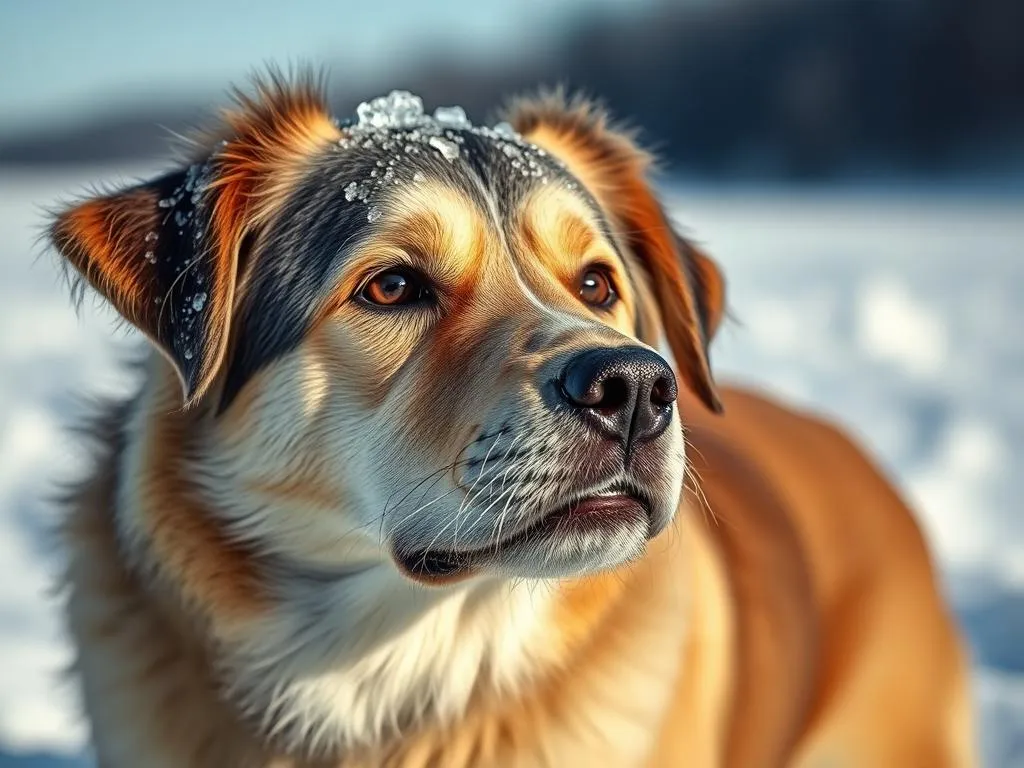
Dogs are known for their playful and quirky behaviors, but one thing that intrigues many pet owners is their love for ice. If you’ve ever tossed a few ice cubes to your dog and watched them dance with joy, you might have wondered: why do dogs like ice? This behavior is not just a random quirk; it stems from a combination of instinct, sensory perception, and playful nature. Understanding this can enhance not only your dog’s enjoyment but also your bond with them.
Understanding Dog Behavior
The Nature of Dogs
To truly grasp why dogs enjoy ice, we must first look at their nature. Dogs are descendants of wolves, and their behavior is often influenced by their wild ancestry. In the wild, wolves are known to seek out cold environments, especially during hot weather, as it helps them regulate their body temperature. This instinct remains in our domestic dogs today, making them naturally drawn to cooler surfaces like ice.
Sensory Perception in Dogs
Dogs have an incredible sense of smell and taste, far superior to that of humans. While humans have about 5 million olfactory receptors, dogs boast around 300 million. This heightened sense means that dogs can detect subtle changes in their environment, including temperature. When they encounter ice, not only do they enjoy the coolness, but the unique texture and sensation also captivate their senses.
Playful Instincts
Play is essential to a dog’s happiness and well-being. Dogs engage in play to explore their environment and practice their hunting skills. Ice presents an exciting challenge; its slippery surface and crunchiness make it a fascinating object to chase and chew. The interaction with ice can stimulate their playful instincts and provide a form of entertainment that keeps them physically active.
The Appeal of Ice for Dogs
Temperature Regulation
One of the most compelling reasons why dogs like ice is its cooling effect. Dogs don’t sweat like humans; they primarily regulate their temperature through panting. On hot days, chewing on ice can provide immediate relief. Ice serves as a natural coolant, helping them lower their body temperature and stay comfortable.
Texture and Sensation
The texture of ice is another factor that draws dogs in. The crunchiness offers a satisfying sensation that many dogs find enjoyable. This tactile experience can be particularly appealing for dogs that enjoy chewing. The contrast between the hard ice and their teeth creates an interesting sensory experience that keeps them engaged.
Hydration Benefits
Keeping dogs hydrated is crucial for their health, and ice can play a role in this. Many dogs are not avid drinkers, and ice can serve as an alternative source of hydration. When dogs chew on ice, they not only cool off but also consume water indirectly, helping to keep them hydrated, especially in warmer months.
Novelty and Curiosity
Dogs are inherently curious creatures. Their exploration of new textures, smells, and tastes is a natural part of their behavior. Ice is an unusual object for them, often leading to a sense of intrigue. The novelty of ice can stimulate their curiosity and encourage them to investigate further, which is a healthy part of canine behavior.
Health Considerations
Is Ice Safe for Dogs?
In general, ice is considered safe for dogs to consume. Many dogs enjoy chewing on ice cubes, and for most healthy dogs, there are no immediate risks associated with this behavior. However, moderation is key. As with any treat, it’s essential to ensure that ice is not overindulged in.
Potential Risks
While ice can be a fun treat, there are potential risks to consider. Chewing on hard ice may pose a threat to your dog’s dental health. Dogs that are prone to dental issues may find that chewing on ice exacerbates their conditions. Additionally, if a dog consumes a large amount of ice quickly, it may lead to digestive discomfort or even gastrointestinal upset.
When to Avoid Ice
There are certain situations where it may be best to avoid giving ice to your dog. Dogs with specific health conditions, such as dental problems or sensitive stomachs, may not benefit from ice. If your dog has a history of pancreatitis or other digestive issues, it’s advisable to consult with a veterinarian before introducing ice as a treat.
Alternative Ways to Keep Dogs Cool
Dog-Friendly Ice Treats
If you’re looking for alternatives to plain ice cubes, consider making dog-friendly frozen treats. Here are a few simple recipes:
-
Fruit and Yogurt Pops: Blend together some dog-safe fruits like bananas or blueberries with plain yogurt. Pour the mixture into molds and freeze for a refreshing treat.
-
Broth Ice Cubes: Freeze low-sodium chicken or beef broth in ice cube trays. These savory treats can provide hydration and flavor.
-
Peanut Butter Ice Cream: Mix plain yogurt with a dollop of peanut butter and freeze. Just make sure the peanut butter doesn’t contain xylitol, which is toxic to dogs.
Other Cooling Methods
In addition to ice, there are various methods to keep your dog cool during hot weather:
- Cooling Mats: These mats have a gel inside that absorbs heat, providing a cool resting place for your dog.
- Water Play: If your dog enjoys water, consider setting up a kiddie pool for them to splash around in. It’s a fun way to help them cool down.
- Shaded Areas: Ensure that your dog has access to shaded areas during outdoor play, especially in the heat of the day.
Hydration Strategies
Encouraging your dog to drink more water is crucial for their health. Here are some tips:
- Fresh Water: Always keep a fresh bowl of water accessible. Change it frequently to entice your dog to drink.
- Flavoring Water: Add a splash of low-sodium broth to their water to make it more enticing.
- Water Bottles: For on-the-go hydration, consider a pet water bottle designed for dogs.
Fun Activities Involving Ice
Ice Games for Dogs
Incorporating ice into playtime can create engaging and fun activities for your dog. Here are a few ideas:
-
Hide-and-Seek with Ice Cubes: Hide ice cubes around the yard or house and let your dog search for them. This not only provides a cool treat but also stimulates their mind.
-
Ice Fetch: Take your dog to a safe area and toss ice cubes for them to fetch. The crunching sound will excite them, and they will enjoy the chase.
Ice as a Training Tool
You can also use ice as a part of training exercises. For example, if your dog is food-motivated, you can use ice cubes as a reward during training sessions. Incorporating ice into positive reinforcement can make training sessions more enjoyable for your dog.
Conclusion
Understanding why dogs like ice can enhance both your pet’s enjoyment and your relationship with them. From providing a cool relief on hot days to satisfying their sensory needs, ice serves multiple purposes for dogs. However, it’s essential to consider health implications and ensure that ice is given in moderation.
As you observe your dog’s behavior, take note of how they interact with ice and other cooling options. Ensuring your dog has safe and enjoyable experiences will undoubtedly strengthen your bond and contribute to their overall happiness. So the next time you toss a few ice cubes their way, relish the joy it brings, knowing that it’s more than just a snack—it’s a connection to their natural instincts and playful spirit.









